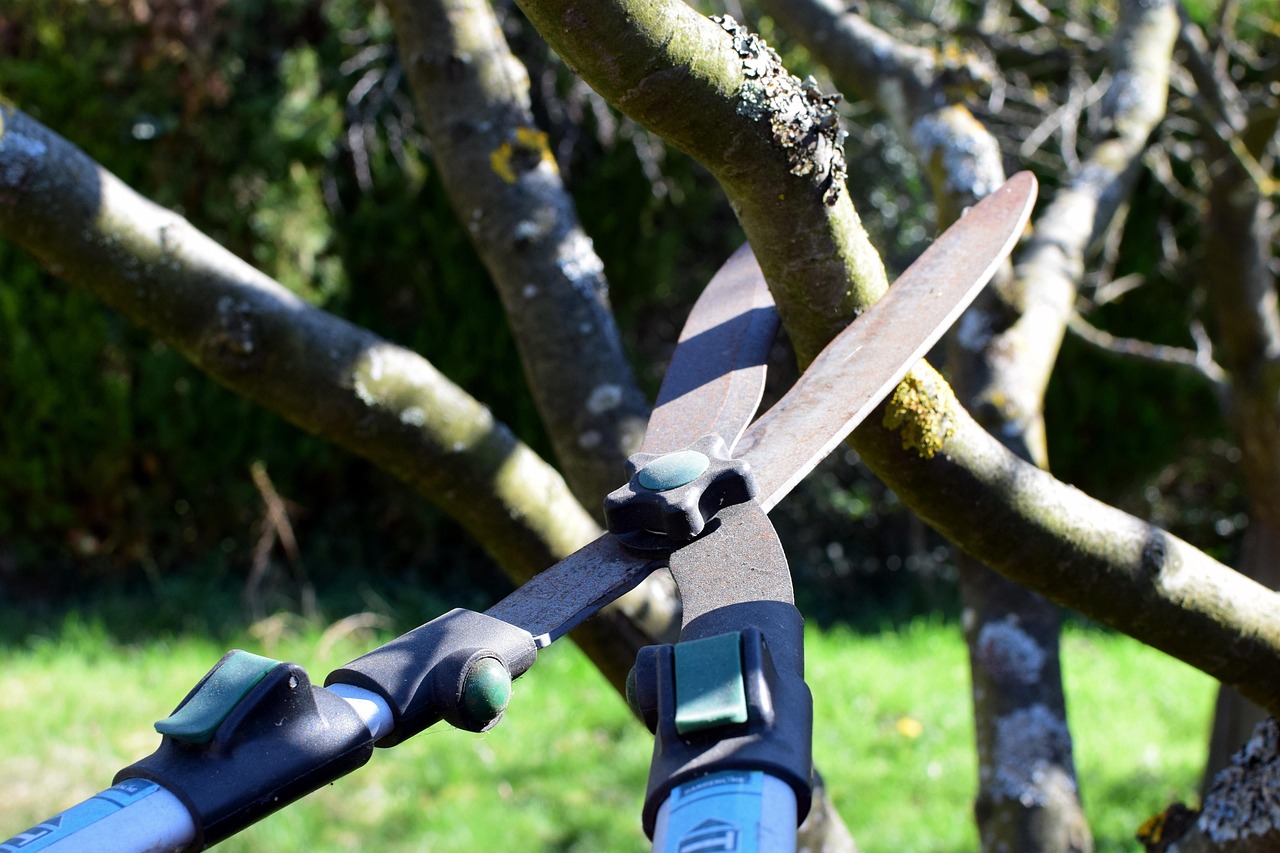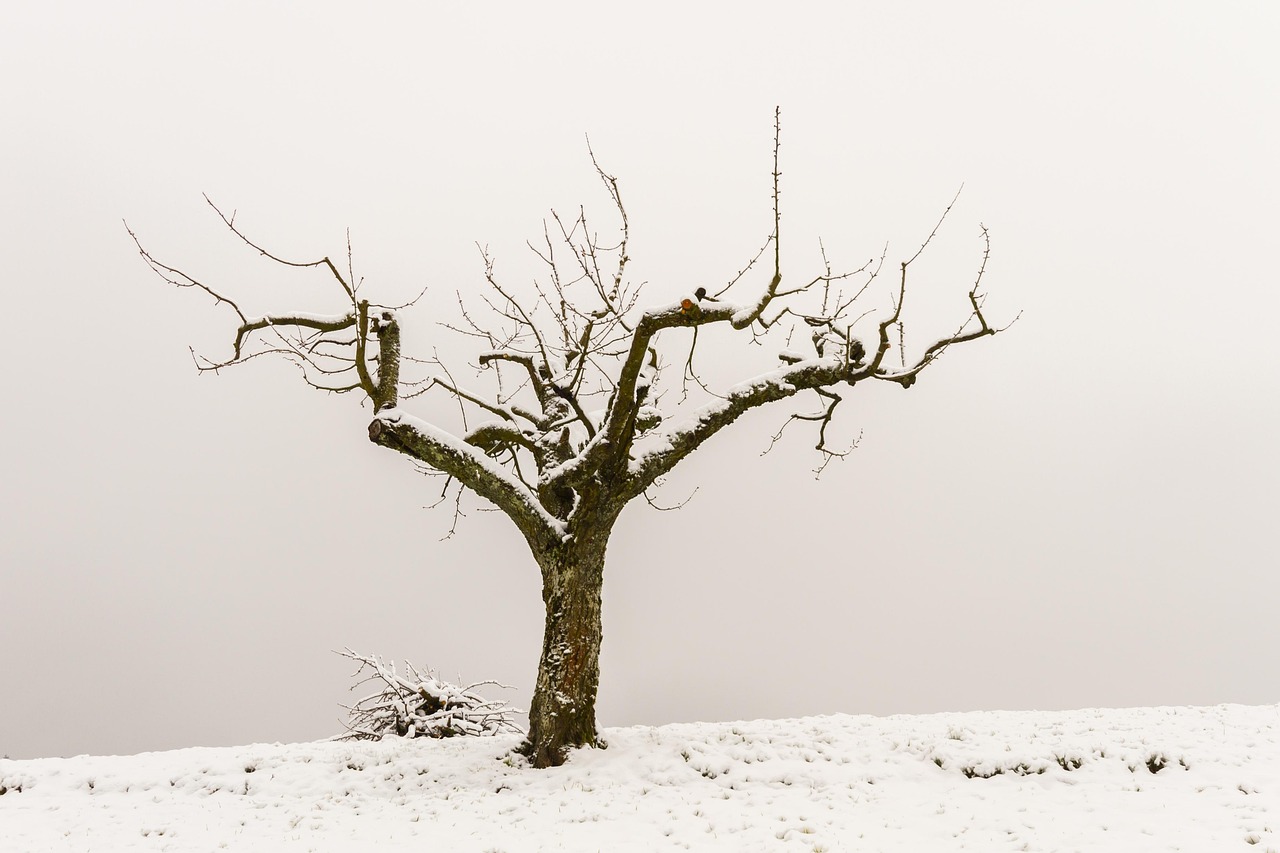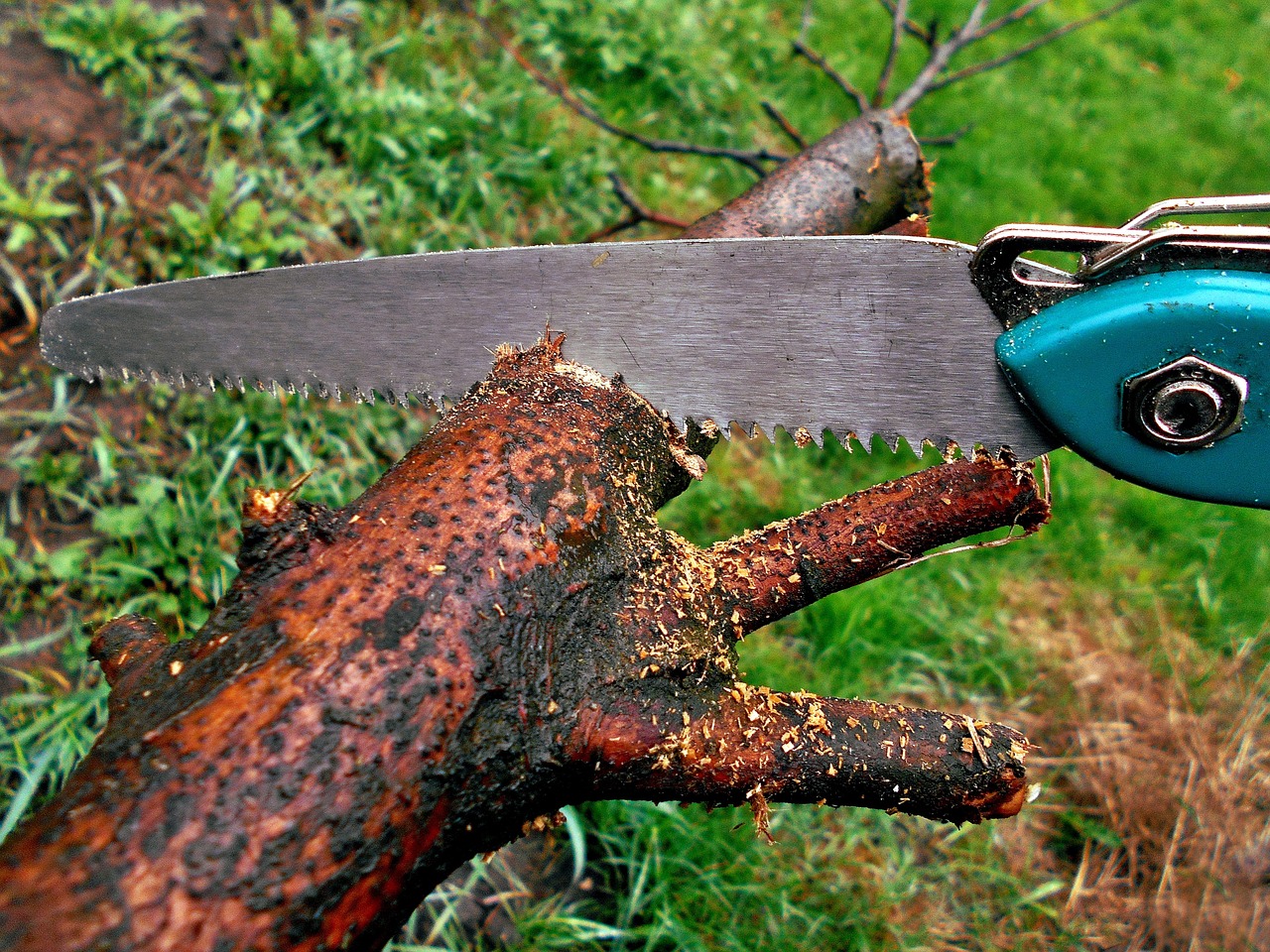Winter pruning for frost-sensitive and tender trees is essential to promote healthy growth. This practice involves trimming during dormancy, which reduces stress on the tree. It helps improve air circulation, light exposure, and encourages robust blooms in spring.
Pruning is a vital aspect of tree care. For frost-sensitive and tender trees, timing is crucial. These trees are often susceptible to cold weather damage. Therefore, winter pruning must be done properly to avoid harming the plant. Many gardeners may hesitate to prune during winter, fearing they could exacerbate stress. However, with the right techniques, winter pruning can enhance the health and vitality of these trees.

Understanding the specific requirements of frost-sensitive trees is key to successful winter pruning. These trees include species such as flowering cherries, citrus trees, and certain ornamental varieties. Each has unique needs based on its genetic makeup and regional climate. Proper pruning not only shapes the trees but also helps in developing a strong structure and encourages new growth in the spring.
Understanding Frost-Sensitive Trees
Frost-sensitive trees thrive in warmer climates and often struggle in colder conditions. They may suffer from frost damage, especially if pruned at the wrong time. When temperatures drop, exposed cuts can freeze, leading to further injury and even death of branches. Therefore, it’s important to know how to identify these trees.
| Tree Type | Common Characteristics | Pruning Tips |
|---|---|---|
| Flowering Cherry | Beautiful blooms; sensitive to frost | Prune during dormancy; avoid heavy cuts |
| Citrus Trees | Produces fruit; prefers warm climates | Light pruning; remove dead or weak branches |
| Ornamental Varieties | Aesthetic appeal; varies by type | Prune after flowering; maintain shape |
Knowing these characteristics helps in formulating a pruning plan. The aim should be to enhance the tree’s natural form while minimizing potential damage. When pruning, always use sharp, clean tools. This minimizes the risk of disease and ensures clean cuts.

Another important factor is the timing of pruning. Winter offers an excellent opportunity since trees are dormant. During this period, they are less vulnerable to injury from pruning cuts. However, local climate conditions can greatly affect the ideal timing for pruning. It is advisable to wait until after the coldest weather has passed but before the new growth begins.
Benefits of Winter Pruning
Winter pruning has several advantages for frost-sensitive trees. Some of these benefits include:
- Improved Air Circulation: Pruning opens up the tree’s canopy, allowing air to circulate better.
- Enhanced Light Penetration: By removing excess branches, more light reaches the inner parts of the tree.
- Healthier Growth: Less crowded branches mean stronger growth in spring.
- Reduced Risk of Disease: Thinning out branches can help prevent fungal infections.
Each of these benefits contributes to the overall health and aesthetic appeal of the tree. Healthy trees are more resilient against pests and diseases, which is critical for frost-sensitive varieties.

Techniques for Pruning Frost-Sensitive Trees
When pruning frost-sensitive trees, several techniques can be employed. These methods help ensure that the tree remains healthy and vibrant after being pruned.
- Thinning Cuts: Remove entire branches back to their source. This method opens up the tree and allows better light and air flow.
- Heading Cuts: Shorten branches by cutting them back to a bud or a lateral branch. This technique encourages bushier growth.
- Removal of Dead or Diseased Wood: Always remove any wood that looks unhealthy or dead. This step is crucial for preventing disease spread.
- Avoid Heavy Pruning: Be gentle with frost-sensitive trees. Heavy cuts can shock them and lead to further issues.
By following these techniques, gardeners can support healthy growth patterns while protecting their trees from potential frost damage.
Caring for frost-sensitive trees through proper winter pruning sets the foundation for robust growth in the spring. Understanding each tree’s specific needs will help ensure their survival and flourishing beauty in your garden.

Tools and Equipment for Winter Pruning
Using the right tools is essential for effective winter pruning of frost-sensitive and tender trees. Proper equipment ensures clean cuts, which promote healing and reduce the risk of disease. Here are some essential tools every gardener should have:
- Pruning Shears: Ideal for small branches, these hand-held tools offer precision and control.
- Loppers: Useful for thicker branches, loppers provide extra leverage for cutting.
- Saws: A small handsaw or pruning saw can handle larger branches that need removal.
- Hedge Shears: These are useful for shaping and maintaining ornamental varieties.
- Safety Gear: Gloves, goggles, and sturdy footwear protect you while working.
Before starting, always check that your tools are sharp and clean. Dull tools can damage branches and introduce diseases. Additionally, disinfecting tools between cuts can prevent the spread of pathogens, especially when pruning multiple trees.
Timing Your Pruning
Determining the best time to prune frost-sensitive trees is critical. While winter is generally the best season, local climate conditions can affect this timing. Here are some factors to consider:
- Temperature Fluctuations: Aim to prune on a day when temperatures are above freezing. This reduces the risk of frost damage to exposed cuts.
- Tree Dormancy: Prune when the tree is fully dormant, typically late winter or early spring before new growth begins.
- Weather Patterns: Monitor forecasts for warmer days following cold spells. This is optimal for pruning as trees can recover better.
By adhering to these guidelines, gardeners can ensure that they prune at the right moments, minimizing stress on the trees and promoting healthy recovery.
Common Mistakes to Avoid
Even experienced gardeners can make mistakes during winter pruning. Being aware of common pitfalls can help you achieve better results. Here are some mistakes to avoid:
- Pruning Too Early: Cutting branches before dormancy ends can expose them to frost damage.
- Over-Pruning: Removing too many branches can shock the tree and hinder growth.
- Ignoring Tree Structure: Failing to consider the tree’s natural shape can lead to improper growth patterns.
- Neglecting Cleanup: Leaving cuttings on the ground may attract pests or diseases.
- Using Dull Tools: Dull tools cause jagged cuts that may not heal properly.
Avoiding these mistakes contributes to healthier trees and a more fruitful growing season. Regularly reassessing your pruning techniques will also improve your skills over time.
Aftercare Following Pruning
After pruning, proper aftercare is essential for helping frost-sensitive trees recover and thrive. Here are some key practices to follow:
- Watering: Ensure trees receive adequate water, especially if winter is dry. Moisture helps them recover from pruning stress.
- Mulching: Apply a layer of organic mulch around the base of the tree. This helps retain moisture and regulate soil temperature.
- Pest Monitoring: Keep an eye out for pests that may be attracted to open cuts. Promptly address any infestations.
- Nutrient Feeding: Consider applying a balanced fertilizer in early spring to support new growth.
Caring for your trees after pruning is just as important as the act itself. By providing the right conditions, you can ensure that your frost-sensitive trees bounce back quickly and healthily.
Signs of Stress in Trees
A key part of caring for frost-sensitive trees involves recognizing signs of stress after pruning. Early detection allows for prompt intervention. Some common signs include:
- Browning Leaves: A sign that the tree may be struggling with moisture levels or nutrient deficiencies.
- Wilting or Dropping Leaves: This can indicate dehydration or shock from severe pruning.
- Cankers or Lesions: These may develop on pruned areas if disease takes hold.
- Pest Infestations: Look for unusual insect activity that could indicate stress or decay.
If you observe any of these signs, take immediate action to address the underlying issues. Consulting with a local arborist may also provide additional insights and solutions tailored to your specific trees.
By understanding tools, timing, mistakes to avoid, aftercare, and signs of stress, you are well-equipped for winter pruning. Proper care leads to thriving frost-sensitive trees that beautify your landscape and enhance your garden’s appeal.
Pruning Techniques for Specific Tree Varieties
Different frost-sensitive trees require tailored pruning techniques to promote optimal growth. Understanding the specific needs of each tree variety ensures effective care. Below are some common frost-sensitive trees and the recommended pruning methods for each.
Flowering Cherries
Flowering cherries are prized for their stunning blooms. To maintain their health:
- Timing: Prune in late winter or early spring before new growth begins.
- Technique: Focus on thinning cuts to remove crowded branches. This opens up the canopy and encourages better air circulation.
- Post-Pruning Care: Monitor for signs of disease, especially after heavy pruning.
Citrus Trees
Citrus trees, including lemons and oranges, thrive in warmer climates but need careful pruning to enhance fruit production:
- Timing: Prune in late winter, just before the growing season starts.
- Technique: Light pruning is key. Remove dead or weak branches, allowing more light to penetrate the tree.
- Post-Pruning Care: Ensure consistent watering and consider applying a citrus-specific fertilizer.
Japanese Maples
Japanese maples are sensitive to harsh conditions, making their pruning essential for maintaining shape and health:
- Timing: Ideal pruning time is during dormancy in late winter.
- Technique: Use thinning cuts to maintain the tree’s natural form. Avoid excessive cutting that may shock the tree.
- Post-Pruning Care: Protect the tree from extreme temperatures by mulching and watering adequately.
Understanding Tree Growth Patterns
A fundamental aspect of successful pruning is understanding how trees grow. Each species has its growth pattern, which significantly influences pruning techniques. Here are some growth patterns to consider:
| Tree Type | Growth Pattern | Pruning Approach |
|---|---|---|
| Deciduous Trees | Lose leaves annually; focus on branching structure. | Thinning cuts to shape and encourage growth. |
| Evergreen Trees | Retain foliage year-round; grow slowly. | Light trimming to maintain shape without removing too much. |
| Tropical Trees | Fast-growing; bloom throughout the year. | Aggressive pruning may be necessary to control size. |
Understanding these patterns helps gardeners know when and where to prune effectively. Each tree type may respond differently, so adjusting techniques accordingly is essential.
The Role of Climate in Pruning Decisions
The local climate plays a significant role in determining the best practices for pruning frost-sensitive trees. Different regions have unique weather patterns, which impact tree health and growth. Here are some considerations:
- Cold Climate: In areas with severe winter temperatures, delay pruning until late winter. This minimizes exposure to frost damage.
- Mild Climate: In warmer regions, early winter may be suitable for some varieties as they can handle slightly warmer days.
- Humidity Levels: High humidity can increase disease risk. Adjust pruning strategies to enhance airflow through the canopy.
Monitoring local weather forecasts also aids in making informed decisions regarding pruning timelines and techniques. By aligning practices with climate conditions, gardeners can significantly improve tree health.
Encouraging New Growth Post-Pruning
After pruning frost-sensitive trees, encouraging new growth is crucial for achieving a vibrant landscape. Here are several strategies to promote healthy development:
- Fertilization: Use a balanced fertilizer to support new growth. Timing should align with the start of the growing season.
- Water Management: Provide consistent moisture, especially during dry spells. Deep watering encourages robust root systems.
- Pest Control: Regularly inspect trees for pests that may target new growth. Prompt treatment can prevent infestations from taking hold.
Caring for your trees after pruning not only supports recovery but also enhances their ability to flourish in subsequent seasons. Observing how they respond will guide future care decisions.
Community Resources and Support
A wealth of resources is available for gardeners looking to enhance their knowledge and skills in winter pruning for frost-sensitive trees. Consider the following options:
- Local Cooperative Extension Offices: These provide valuable information on regional tree care practices and educational workshops.
- Gardening Clubs: Joining a local gardening club offers networking opportunities with experienced gardeners who can share tips and insights.
- Online Forums: Websites and forums dedicated to gardening can be excellent platforms for asking questions and sharing experiences with fellow enthusiasts.
Tapping into these resources can help improve your understanding of winter pruning techniques and foster community connections among gardeners.
Additional Considerations for Winter Pruning
As you embark on winter pruning for frost-sensitive and tender trees, consider additional factors that can influence the process and outcome. These considerations help ensure that your efforts yield the best results while maintaining tree health.
Soil Health and Tree Nutrition
The health of the soil directly impacts the vitality of your trees. Healthy soil provides essential nutrients, which are crucial for recovery after pruning. Here are some practices to enhance soil health:
- Soil Testing: Conduct soil tests to determine pH levels and nutrient availability. This helps in selecting the right fertilizers.
- Organic Matter: Incorporate organic matter such as compost or well-rotted manure to improve soil structure and fertility.
- Mulching: Apply mulch around the base of trees to conserve moisture, suppress weeds, and gradually enrich the soil as it decomposes.
By focusing on soil health, you create a nurturing environment that supports your frost-sensitive trees throughout their growth cycles.
Microclimates and Their Effects
Understanding microclimates in your garden can significantly influence pruning decisions. A microclimate is a small area with a different climate than its surroundings. Consider the following:
- Sun Exposure: Areas that receive more sunlight may encourage earlier budding. Adjust your pruning schedule accordingly to avoid frost damage.
- Wind Protection: Trees in windy locations may require more frequent pruning to reduce wind resistance and protect against breakage.
- Moisture Levels: Certain areas may retain moisture better, impacting how you approach watering and fertilization post-pruning.
Being mindful of these microclimates helps tailor your care practices, ensuring that each tree receives the attention it needs based on its specific environment.
Pest Management Strategies
Pests can pose a significant threat to frost-sensitive trees, particularly after pruning when trees are vulnerable. Implementing effective pest management strategies is essential:
- Regular Inspections: Frequently check for signs of pests or disease, especially after pruning. Early intervention can prevent major infestations.
- Natural Predators: Encourage beneficial insects such as ladybugs and lacewings, which can help control pest populations naturally.
- Pesticide Application: If necessary, use targeted pesticides or organic options to manage pests while minimizing harm to the environment.
Staying vigilant about pest management will protect your trees and ensure their long-term vitality.
Understanding Local Regulations
It’s also important to be aware of any local regulations regarding tree pruning. Some municipalities may have specific guidelines concerning:
- Protected Species: Certain species may be protected by law, requiring permission before any pruning or removal.
- Tree Size Limitations: Local ordinances might dictate how much you can prune based on tree size and species.
- Seasonal Restrictions: There may be specific times of year when pruning is prohibited to protect wildlife or plant health.
Understanding these regulations will help you avoid potential fines and ensure compliance while caring for your trees responsibly.
Final Thoughts
Winter pruning for frost-sensitive and tender trees is a complex but rewarding task that requires knowledge, patience, and skill. By understanding the specific needs of various tree species, utilizing the right tools, and being attentive to local climate conditions, gardeners can effectively promote healthy growth while minimizing risks associated with frost damage.
The importance of proper timing, aftercare, and pest management cannot be overstated. Each step in the pruning process contributes significantly to the overall health of your trees. Furthermore, leveraging community resources and educational opportunities enhances your understanding and skills over time.
Ultimately, successful winter pruning leads to vibrant landscapes filled with flourishing trees that provide beauty and enjoyment for years to come. With careful planning and execution, every gardener can foster a thriving environment for their frost-sensitive trees.
Your journey in tree care is ongoing. As you learn more about winter pruning and tree health, you’ll refine your techniques and deepen your connection with nature. Happy pruning!
